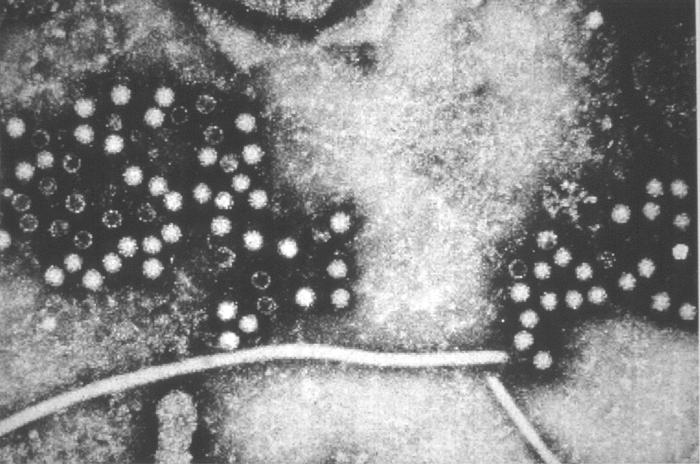Hepatitis E causes
|
Hepatitis E Microchapters |
|
Diagnosis |
|---|
|
Treatment |
|
Hepatitis E causes On the Web |
|
American Roentgen Ray Society Images of Hepatitis E causes |
Editor-In-Chief: C. Michael Gibson, M.S., M.D. [1]; Associate Editor(s)-in-Chief: João André Alves Silva, M.D. [2]
Overview
Taxonomy
Viruses; ssRNA viruses; ssRNA positive-strand viruses; Hepeviridae; Hepevirus; Hepatitis E virus[1]
Biology
 |
The viral particles are 27 to 34 nanometers in diameter, are non-enveloped and contain a single-strand of positive-sense RNA that is approximately 7300 bases in length. The virus particle was first visualised in 1983[3] but was only molecularly cloned in 1990.[4]
It was previously classified family Caliciviridae. However, its genome more closely resembles the rubella virus. It is now classified in a new virus family, named as Hepeviridae.
- Caused by the Hepatitis E virus (HEV)
- HEV is found in the stool (feces) of persons and animals with hepatitis E.
- HEV is spread by eating or drinking contaminated food or water.
- Transmission from person to person occurs less commonly than with hepatitis A virus
- Most outbreaks in developing countries have been associated with contaminated drinking water. [3]
Life Cycle
Genotypes
Tropism
Natural Reservoir
References
- ↑ "Hepatitis E virus taxonomy".
- ↑ "http://phil.cdc.gov/phil/details.asp". External link in
|title=(help) - ↑ Balayan MS, Andjaparidze AG, Savinskaya SS; et al. (1983). "Evidence for a virus in non-A, non-B hepatitis transmitted via the fecal-oral route". Intervirology. 20 (1): 23–31. PMID 6409836.
- ↑ Reyes GR, Purdy MA, Kim JP; et al. (1990). "Isolation of a cDNA from the virus responsible for enterically transmitted non-A, non-B hepatitis". Science. 247 (4948): 1335–9. doi:10.1126/science.2107574. PMID 2107574.